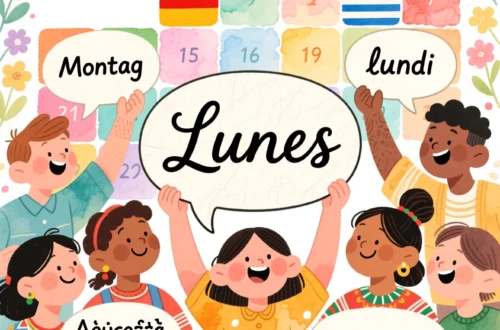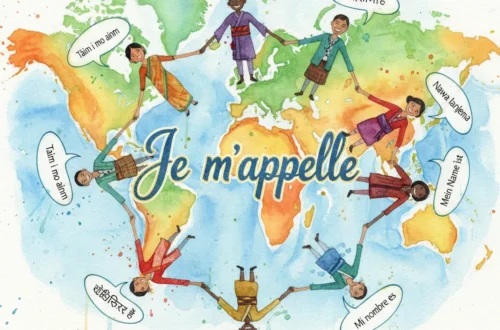Picture a child in a rural Japanese village giggling as they mimic a dog’s “wan wan,” or a Moroccan market buzzing with a vendor imitating a cat’s “mow mow.”
Animal onomatopoeia—the words we use to mimic animal sounds—varies wildly across languages, yet it captures a universal human instinct to echo nature. Whether it’s a rooster’s crow in a Kenyan village or a frog’s croak in a Hawaiian forest, these sounds connect us to the animal world, shaped by each culture’s unique ear.
Let’s embark on a global journey to explore how people mimic animal sounds and what these playful words reveal about their languages and traditions.
Reference Table: Animal Onomatopoeia in Different Languages
| Language | Animal | Word/Phrase | Cultural/Linguistic Insight |
|---|---|---|---|
| French | Dog | Ouaf ouaf | A softer bark, reflecting French’s melodic tone. |
| Spanish | Cat | Miau | Similar to English “meow,” used playfully in Spain. |
| Italian | Rooster | Chicchirichì | Mimics the rooster’s vibrant crow, poetic and rhythmic. |
| German | Frog | Quak quak | A sharp, clear imitation, aligning with German’s precision. |
| Mandarin | Pig | Hū hū (呼呼) | Mimics snorting, with tones adding a musical quality. |
| Hindi | Cow | Mōō | A drawn-out sound, evoking India’s reverence for cows. |
| Japanese | Dog | Wan wan (ワンワン) | A high-pitched bark, reflecting Japan’s playful tone. |
| Korean | Cat | Yaong (야옹) | A soft, expressive meow, used affectionately. |
| Arabic | Rooster | Kūkū (كوكو) | A rhythmic crow, common across 20+ countries. |
| Swahili | Lion | Ngurumo | Mimics a deep roar, reflecting East Africa’s wildlife. |
| Zulu | Dog | Wu wu | A warm, simple bark, used in South African storytelling. |
| Yoruba | Frog | Ko ko | A repetitive croak, tied to Nigeria’s oral traditions. |
| Maori | Bird | Kōkō | Mimics native bird calls, tied to New Zealand’s nature. |
| Hawaiian | Pig | Nū nū | A nasal grunt, evoking the islands’ relaxed vibe. |
| Cherokee | Owl | Hoo hoo | A haunting hoot, reflecting spiritual ties to nature. |
European Languages: Playful Echoes of Nature
European languages mimic animal sounds with flair, blending playfulness and precision. For instance, in French, a dog’s bark is “ouaf ouaf,” softer and more melodic, often used in children’s stories in Paris. Meanwhile, Spanish speakers say “miau” for a cat’s meow, a familiar sound in Madrid’s lively streets, similar to English but with a warm twist. Additionally, Italian captures a rooster’s crow with “chicchirichì,” a rhythmic and poetic imitation that feels like a morning song in Tuscany. In German, a frog’s croak is “quak quak,” sharp and clear, reflecting the language’s straightforward style. Thus, these sounds mirror Europe’s blend of lyricism and clarity, from French’s soft tones to German’s crisp precision.
Asian Languages: Harmony in Animal Sounds
Asia’s linguistic diversity shapes vibrant animal onomatopoeia, often tied to cultural reverence for nature. For example, in Mandarin, a pig’s grunt is “hū hū,” with tones adding a musical quality, heard in rural China. In Hindi, a cow’s “mōō” is long and soulful, reflecting India’s sacred view of cows, often mimicked in village tales. Similarly, Japanese uses “wan wan” for a dog’s bark, a playful, high-pitched sound used in anime and children’s songs. In Korean, a cat’s “yaong” is soft and affectionate, aligning with South Korea’s emotive culture. Finally, Arabic’s “kūkū” for a rooster’s crow, used across over 20 countries like Egypt and Iraq, carries a rhythmic beat, rooted in the region’s poetic traditions. These sounds highlight Asia’s range, from melodic to reverent imitations.
African Languages: Roars and Croaks of Community
African languages mimic animal sounds with warmth, often tied to storytelling and community. For instance, Swahili, spoken in over 20 countries like Tanzania and Uganda, uses “ngurumo” for a lion’s roar, evoking the power of East Africa’s wildlife. In Zulu, a dog’s bark is “wu wu,” a simple sound woven into South African folktales. Similarly, Yoruba’s “ko ko” for a frog’s croak is rhythmic, used in Nigeria’s oral traditions to teach children about nature. These terms, heard in markets or village gatherings, reflect Africa’s deep connection to the environment and communal storytelling.
Indigenous & Island Languages: Nature’s Echoes in Close-Knit Communities
Indigenous and island languages mimic animal sounds with simplicity and reverence. For example, Maori in New Zealand uses “kōkō” for native bird calls, reflecting a deep bond with nature. In Hawaiian, a pig’s grunt is “nū nū,” a nasal sound tied to the islands’ relaxed aloha spirit. Similarly, Cherokee’s “hoo hoo” for an owl’s hoot carries spiritual weight, used in Native American stories to evoke wisdom. In Samoan, a bird’s call might be “manu,” a simple imitation used in Pacific communal settings. Across these cultures, from New Zealand to the Cherokee Nation, animal onomatopoeia connects people to their environment, often through rituals or tales.
Cultural Insights: The Evolution of Animal Mimicry
Animal onomatopoeia reflects cultural histories and human-nature connections. For instance, English’s “meow” and Spanish’s “miau” share Indo-European roots, showing linguistic exchange. In Arabic, “kūkū” for roosters traces back to medieval poetry, emphasizing rhythm. Moreover, in African languages like Swahili, “ngurumo” for a lion’s roar draws from safari traditions, while in Asia, Japan’s “wan wan” reflects a playful culture shaped by anime. These sounds are more than mimicry—they carry stories of trade, folklore, and environmental ties, uniting humans across centuries.
Proverbs and Sayings: Wisdom of Nature’s Sounds
- French: “Le chant du coq réveille le cœur.” (The rooster’s crow awakens the heart.) – Ties animal sounds to vitality.
- Hindi: “Gau ka mōō dil ko chūta hai.” (The cow’s moo touches the heart.) – Reflects reverence for animals.
- Swahili: “Ngurumo ya simba ni sauti ya nguvu.” (The lion’s roar is the voice of strength.) – Celebrates nature’s power.
- Japanese: “Wan wan, kokoro no koe.” (The dog’s bark, the voice of the heart.) – Links sounds to emotion.
- Yoruba: “Ko ko ni ohun igbo.” (The frog’s croak is the forest’s voice.) – Ties animals to nature’s spirit.
FAQs
Why do animal sounds vary across languages?
Sounds are shaped by phonetics and cultural perception, like Japanese hearing “wan wan” where English hears “woof.”
What’s the oldest animal onomatopoeia?
Terms like “baa” for sheep, found in ancient Greek texts (circa 5th century BCE), are among the earliest recorded.
How do cultures influence these sounds?
Cultures with strong oral traditions (e.g., African, Indigenous) use onomatopoeia in storytelling, while urban cultures (e.g., Japanese) add playful tones.
Conclusion
From “ouaf ouaf” in France to “ngurumo” in Tanzania, animal onomatopoeia creates a global symphony of nature’s voices. Each sound, whether the playful “wan wan” in Japanese or the soulful “mōō” in Hindi, reflects cultural values while celebrating our shared connection to animals. Consequently, these words remind us that mimicking nature unites all people in a joyful chorus. How do you mimic animal sounds in your language? Share your favorites below—we’d love to hear your story!





